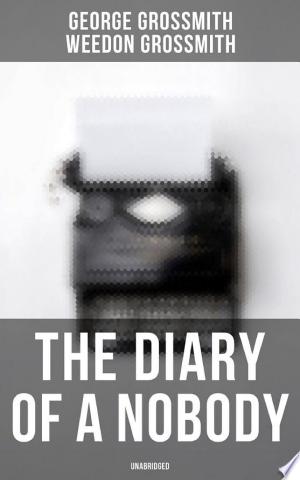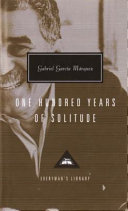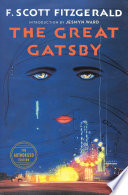
"The Diary of a Nobody" Summary
classics | Published in 2022
Estimated read time: 6 min read
One Sentence Summary
The amusing and relatable account of the everyday life and self-importance of Charles Pooter, an ordinary middle-class man.
Table of Contents
Introduction
"The Diary of a Nobody" is a comedic novel written by brothers George and Weedon Grossmith, originally published in 1892. This satirical work presents the daily life and misadventures of Charles Pooter, a middle-aged City of London clerk, through his journal entries. Filled with a delightful blend of dry humor and social commentary, this novel offers a unique perspective on the struggles and follies of ordinary people in late Victorian society.
Brief Synopsis
Set in the late 19th century, "The Diary of a Nobody" takes place in the suburbs of London, primarily in the fictional locale of Holloway. The story revolves around Charles Pooter, a lower-middle-class clerk, and his family, including his wife Carrie and their son Lupin.
Charles, the narrator and protagonist, begins keeping a diary to record the daily occurrences and mundane life events that ensue. While the entries start with a focus on the small details and domestic concerns, such as the behavior of their servants, the escapades of their friends, and Charles' aspirations for social recognition, the diary gradually reveals Charles Pooter's self-importance and the hilarity that ensues as his grand plans unravel.
Main Characters
| Character | Description |
|---|---|
| Charles Pooter | The middle-aged protagonist and narrator of the story. Works as a clerk in the City of London. Self-important and prone to social gaffes, Charles is often the source of humorous situations. |
| Carrie Pooter | Charles' wife, a loving and patient woman who supports her husband despite his eccentricities. |
| Lupin Pooter | Charles and Carrie's son, a young adult with his own aspirations and romantic entanglements. |
| Mr. Perkupp | Charles' superior at work, a significant character who adds to the comedic dynamics of the story. |
| Mr. Cummings | A friend of Charles who often visits their home. |
| Gowing and Tupman | Other friends of Charles who make regular appearances in the diary. |
Summary of Story Points
Chapter 1-3: The Diary Begins and Social Hopes
- Charles Pooter introduces himself as the diarist and explains his reasons for starting the journal.
- He expresses his social aspirations and desire for recognition in the upper-middle-class society.
- Charles recounts amusing incidents involving his neighbors, such as Mr. Hutchings planting onions in his front garden.
- The Pooter family attends the annual Mansion House Ball, where Charles is disappointed by the lack of social recognition he receives.
- Charles becomes obsessed with a silver inkstand and attempts to purchase it to enhance his social status.
Chapter 4-6: The Prank of the "Holloway Comedians"
- Charles receives a series of prank letters from the "Holloway Comedians," causing him confusion and frustration.
- He suspects his friends, Gowing and Cummings, to be behind the prank and confronts them.
- Charles and his wife Carrie visit a Dutch exhibition, but their outing is marred by various comical mishaps.
Chapter 7-8: Lupin's Romantic Troubles
- Lupin reveals he is engaged to Daisy Mutlar, a young woman with a questionable reputation.
- Charles and Carrie disapprove of the engagement, leading to tension within the family.
- Carrie attempts to intervene and dissolve the engagement, only to face resistance from her son.
Chapter 9-11: Lupin's Irresponsible Behavior
- Lupin loses his job at a bank due to his irresponsible behavior, causing further strain in the Pooter family.
- Charles receives a disappointing letter rejecting his entry to an artistic society.
- Charles and Carrie's hopes of hosting a garden party are dashed when their invitation is declined by a distinguished guest.
Main Events
- Charles Pooter's aspiring social rise and disappointment at the Mansion House Ball.
- The arrival of prank letters from the "Holloway Comedians" and the consequent suspicion of his friends Gowing and Cummings.
- Charles and Carrie's visit to the Dutch exhibition and the ensuing comedic mishaps.
- Lupin's engagement to Daisy Mutlar and the resulting tension within the family.
- Lupin's loss of employment and the rejection of Charles' artistic society application.
- The failure of the Pooter's garden party due to a declined invitation.
Themes and Insights
- Social Aspirations and Disillusionment: Charles Pooter's longing for social recognition highlights the desire of ordinary individuals to elevate their status but ultimately exposes the absurdity of such ambitions.
- Domestic Comedy and Satire: The novel employs humor to satirize the small details and misunderstandings of everyday life, providing insightful commentary on the human condition.
- Familial Relationships and Conflict: Through the interactions between Charles, Carrie, and Lupin, the story explores the tensions and strains that can arise within a family, often stemming from divergent aspirations and beliefs.
- Identity and Self-Importance: Charles Pooter's exaggerated sense of self-importance serves as a comic device while inviting readers to reflect on their own preoccupations with status and external validation.
Reader's Takeaway
"The Diary of a Nobody" offers readers a refreshing and humorous perspective on the triumphs and pitfalls of everyday life. Through Charles Pooter's journal entries, the novel presents a relatable journey of a man striving to be noticed and respected in society, while shedding light on the folly and absurdity of our own aspirations. The satirical elements and comical situations provide an enjoyable read that both entertains and invites reflection on the nature of human existence.
Conclusion
"The Diary of a Nobody" remains a beloved classic, cherished for its wit, humor, and keen observation of Victorian suburban life. It serves as a timeless reminder that even the most ordinary aspects of our lives can be a source of laughter and insight. The universal themes explored in this novel ensure its enduring relevance and continued popularity among readers of all generations.
The Diary of a Nobody FAQ
What is 'The Diary of a Nobody' about?
Who are the authors of 'The Diary of a Nobody'?
Is 'The Diary of a Nobody' based on a true story?
When was 'The Diary of a Nobody' first published?
Is 'The Diary of a Nobody' considered a classic?
What makes 'The Diary of a Nobody' humorous?
Can 'The Diary of a Nobody' be enjoyed by readers today?
Is 'The Diary of a Nobody' suitable for all ages?
Are there any adaptations of 'The Diary of a Nobody'?
Is 'The Diary of a Nobody' a long book?




